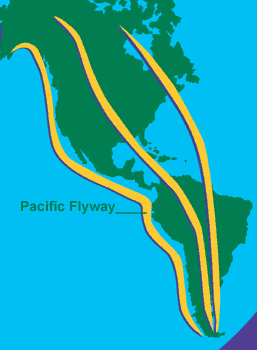
Photo courtesy of Prince William Network - A map of major migratory pathways for birds – the left-most route is that of the Pacific Flyway.
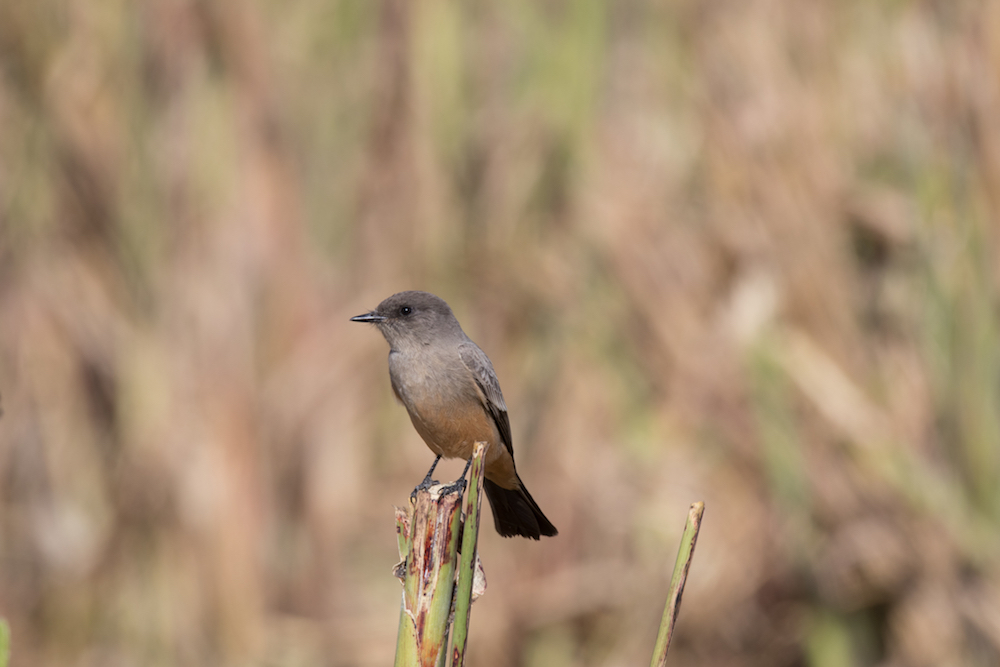
Photo courtesy of iNaturalist.org, member iee - A visitor that begins to arrive in the fall, the Say’s Phoebe (Sayornis saya) travels south to San Diego to spend the winter.
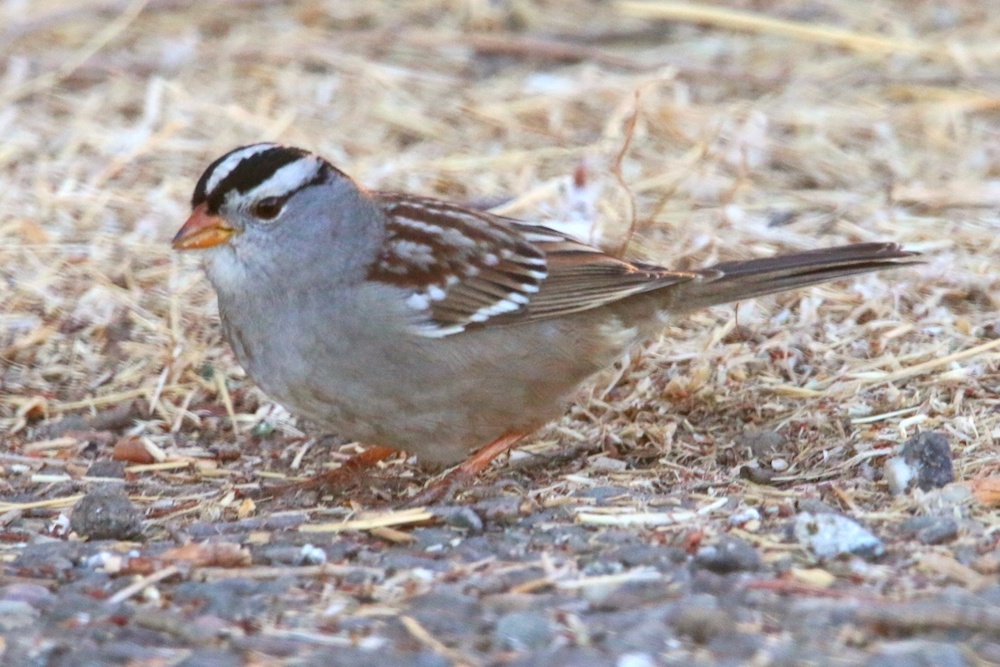 Photo courtesy of iNaturalist.org, member mattk561 - Another bird that likes to winter in warm places, the White-crowned Sparrow (Zonotrichia leucophrys).
Photo courtesy of iNaturalist.org, member mattk561 - Another bird that likes to winter in warm places, the White-crowned Sparrow (Zonotrichia leucophrys).Birds, like any animal species, can be identified by their characteristics – physical or behavioral. Physical characteristics that are commonly used to identify bird species are body shape, posture, wing shape, and marks or colors on the plumage (feathers). With an initial glance, body shape and posture are great characteristics to narrow down the species of bird. A California Brown Pelican’s (Pelecanus occidentalis californicus) body shape looks nothing like that of a sparrow, for instance. Pay attention to the bird’s size and to characteristics such as bill (beak) shape – the pelican has a long bill with a fish-holding pouch, whereas the sparrow has a short conical (cone-shaped) bill. Feet, too, are a good differentiator – pelicans have large, webbed feet for swimming while sparrows sport thin, non-webbed toes to allow them to perch on branches. Posture refers to how the bird holds itself – is the bird upright with a puffed-out chest, like a Hermit Thrush, or is it more horizontally oriented, like a Scrub-Jay? Does it have a small tail that bends toward the ground, or is the tail long, pert, and erect, like a Bewick’s Wren?
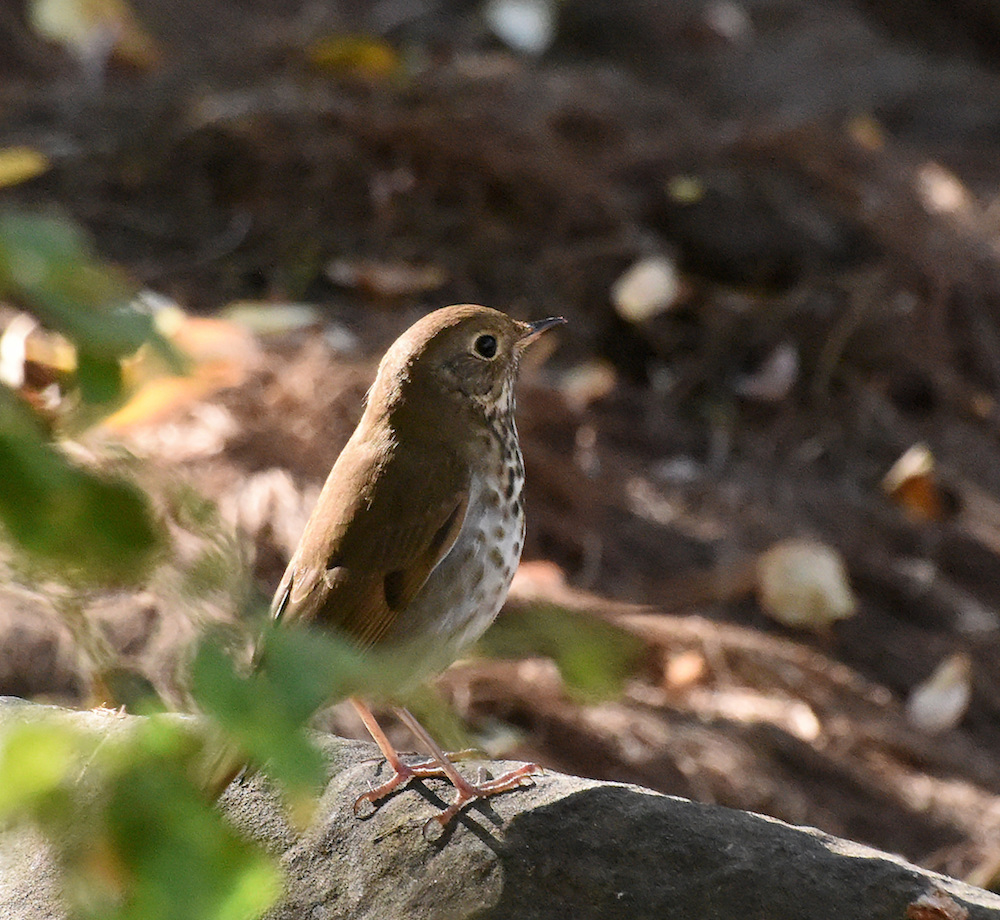 Photo courtesy of iNaturalist.org, member hfabian - The upright posture and fluffed chest of a Hermit Thrush (Catharus guttatus) is a distinct characteristic at first glance.
Photo courtesy of iNaturalist.org, member hfabian - The upright posture and fluffed chest of a Hermit Thrush (Catharus guttatus) is a distinct characteristic at first glance.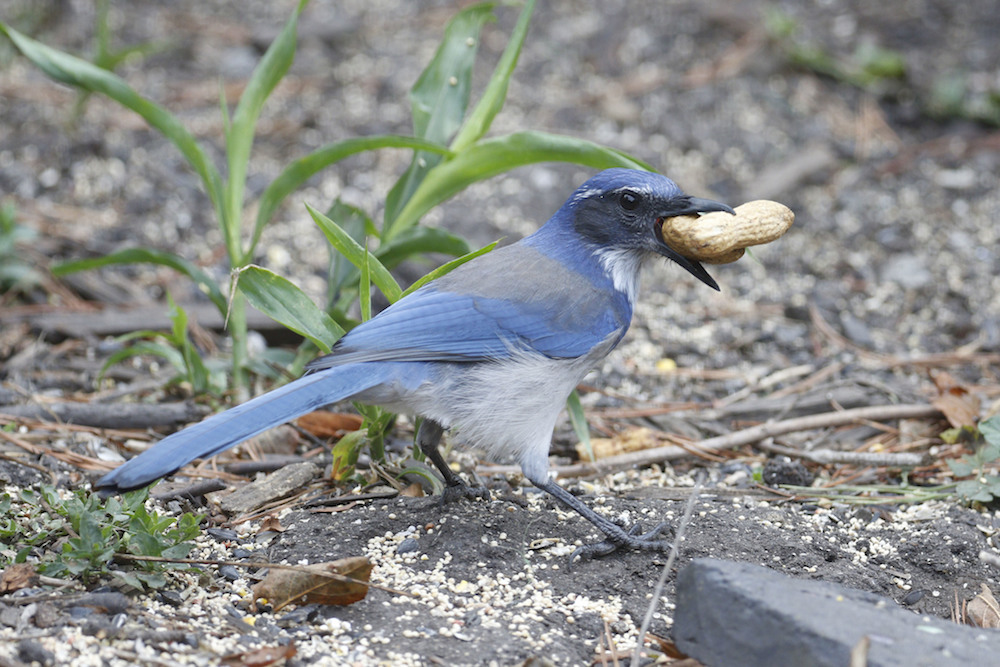 Photo courtesy of iNaturalist.org, member dpom - California Scrub-Jays (Aphelocoma californica) tend to have a more “hunched” posture than many other birds i.e. compared to the Hermit Thrush.
Photo courtesy of iNaturalist.org, member dpom - California Scrub-Jays (Aphelocoma californica) tend to have a more “hunched” posture than many other birds i.e. compared to the Hermit Thrush.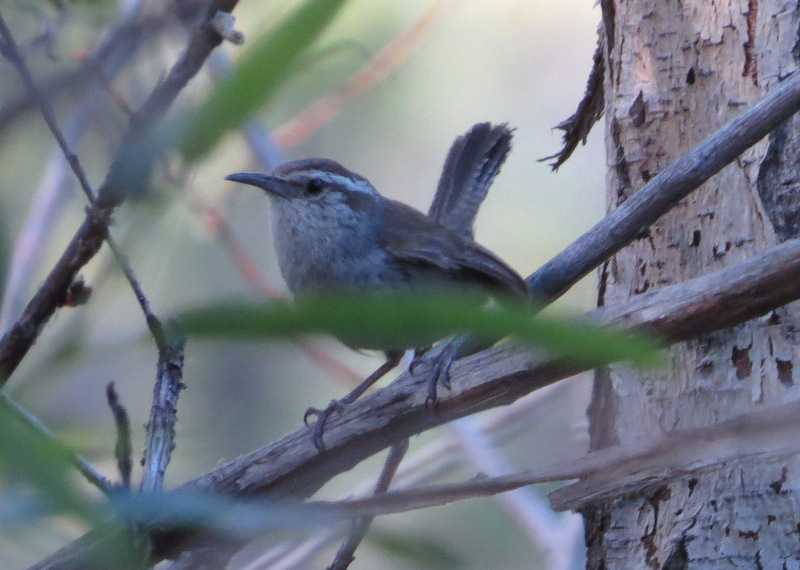 Photo courtesy of iNaturalist.org, member jeffharding - All wren species, such as this Bewick’s Wren (Thryomanes bewickii), have a very erect tail with a distinct barred pattern and a dramatic white eyeline.
Photo courtesy of iNaturalist.org, member jeffharding - All wren species, such as this Bewick’s Wren (Thryomanes bewickii), have a very erect tail with a distinct barred pattern and a dramatic white eyeline.After eliminating dozens of potential species with the first glance, you can begin to look more closely at some of the less obvious characteristics such as plumage. Some birds have distinct plumage that makes their species easily identifiable. Take the Pin-tailed Whydah (Vidua macroura), for instance: this species’ long, luxurious tail is very distinct. Or the noticeable characteristic of a crest on the heads of species like the Northern Cardinal (Cardinalis cardinalis) and Oak Titmouse (Baelophus inornatus).
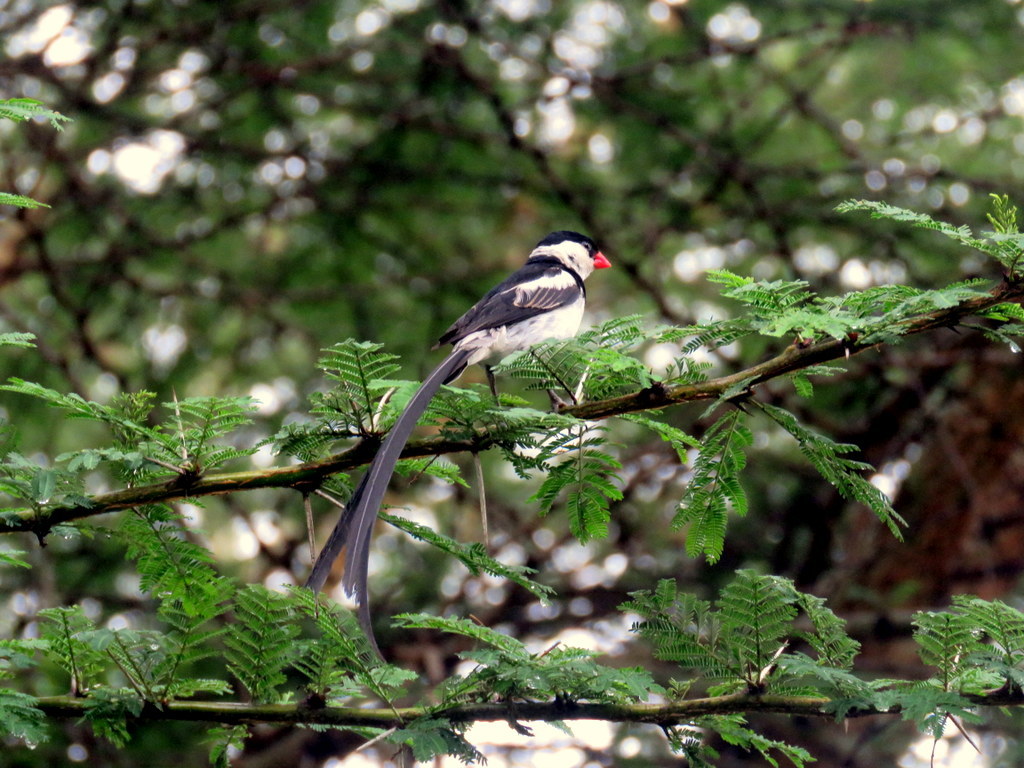 Photo courtesy of iNaturalist.org , member Diego Carús – The ultra-long and visibly distinct tail feathers of a Pin-tailed Whydah.
Photo courtesy of iNaturalist.org , member Diego Carús – The ultra-long and visibly distinct tail feathers of a Pin-tailed Whydah.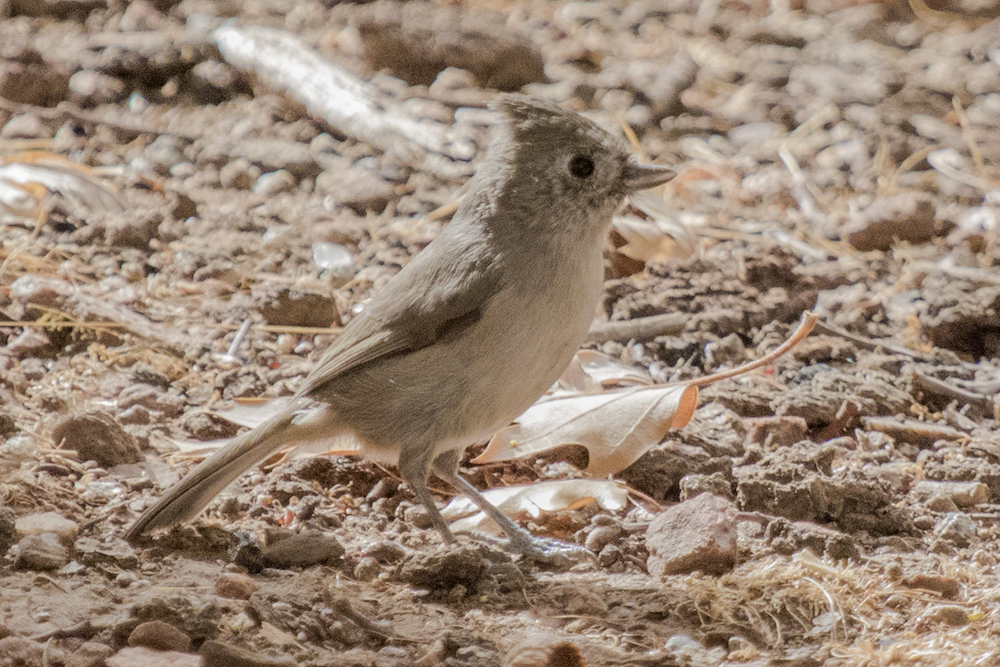 Photo courtesy of iNaturalist.org, member finatic – An Oak Titmouse has longer feathers on the crown of its head, called a crest.
Photo courtesy of iNaturalist.org, member finatic – An Oak Titmouse has longer feathers on the crown of its head, called a crest.  Photo courtesy of iNaturalist.org, member paultavares – The distinguishing crest of a Northern Cardinal.
Photo courtesy of iNaturalist.org, member paultavares – The distinguishing crest of a Northern Cardinal.Feather colors and markings are an additional way to differentiate one species of bird from another. It’s helpful to learn plumage topography (different regions of the body) to become more efficient at finding the species of interest in a field guide and to describe the bird to others. For example, the Bewick’s Wren has a dramatic white line above its eye, which is called a supercilium. Yellow-rumped Warblers (Setophaga coronata) have a yellow patch on their back at the base of their tail, an area named the rump. Being able to recognize and describe these regions accurately will make you a better birder!
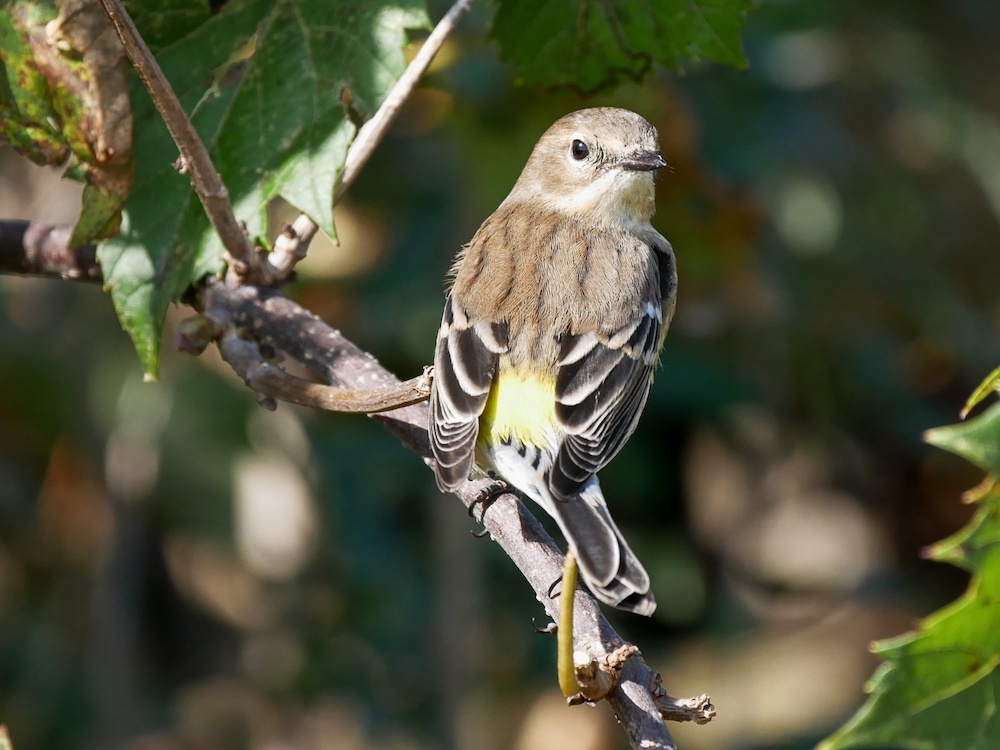 Photo courtesy of iNaturalist.org, member donaldmcleod – A yellow patch at the base of the tail is the namesake of the Yellow-rumped Warbler.
Photo courtesy of iNaturalist.org, member donaldmcleod – A yellow patch at the base of the tail is the namesake of the Yellow-rumped Warbler.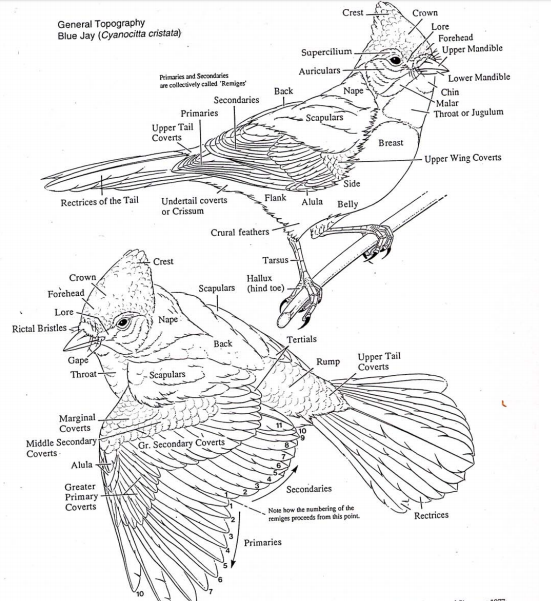 Learning the topography of birds assists in identification and communication.
Learning the topography of birds assists in identification and communication.Finally, birds are often “on the wing,” or just flying by, so what are some methods to identify these species? A great indicator is the wing shape of the bird. For instance, raptors (predatory birds) are often soaring high overhead where it’s difficult to see the topography of the bird. So instead, these species can be narrowed down by observing the structure of the wing in silhouette. If the bird has a broad, straight wing it is likely a hawk or an eagle. If it has longer, more tapered wings angled back towards its body, the species is probably that of a falcon or Osprey (Pandion haliaetus).
 Photo courtesy of the Hawk Migrations Association of North America - The silhouette of raptors as they fly overhead is a way to differentiate species. Note: “Accipiters” and “Buteos” are different groups of hawks.
Photo courtesy of the Hawk Migrations Association of North America - The silhouette of raptors as they fly overhead is a way to differentiate species. Note: “Accipiters” and “Buteos” are different groups of hawks.With practice, beginner birders can learn to quickly identify what they’re looking at, making getting out into nature far more interesting! Cabrillo National Monument is one of the most popular places in San Diego County to bird, thus an excellent place to hone your new birdwatching skills. So grab the binoculars (or check them out at our Visitor Center), obtain a field guide, and visit your National Monument today – there are hundreds of birds here to greet you!
References
Cabrillo National Monument Field Guides:
http://cabrilloeducation.com/resource-guides
Birds at Cabrillo:
https://www.nps.gov/cabr/blogs/on-the-wing-shorebird-surveys-at-cabrillo-national-monument.htm
